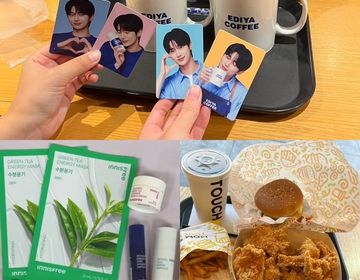Getting Around the City: Public Transportation in Seoul
Moving to a new city can feel super overwhelming, especially when it comes to figuring out how to get around without speaking the native language. However, one of the best parts of living in Seoul is how efficient the transportation system is. As a student, you’ll probably be using transportation a lot, from shopping in Gangnam, eating ramen by the Hangang, or visiting Ikseon-dong for cafe-hopping.
"picture of bus stop"
How to Get Around with Transportation Cards
Most subway and bus stops are announced in both Korean and English, making it easy to navigate if you’re not fluent in Korean. To use the subway or bus, you’ll need a transportation card. The T-Money card is the most popular option and can be used on both subways and buses. My first T-money card was given to me during CIEE orientation! However, if you want to get a T-money card with a different design you can visit your closest convenience store (GS25, 7/11, or CU), each card costs about 3000-5000 KRW (around 2-3 USD). With a T-money card, traveling to one destination can cost under $1.50. Refilling your card can be easily done at your local convenience store or by visiting the subway station with cash.
If you plan on traveling a lot within Seoul, I recommend getting the Climate Card. The Climate Card is a monthly fee you can pay for unlimited bus and subway rides for about 62000 KRW (45 USD) can be purchased at your local convenience store. Since I love walking around and exploring the city, I found the Climate Card to be super useful when traveling to multiple districts in Seoul. However, the Climate Card is only restricted to the city of Seoul, and won’t cover areas outside of the city like Incheon or Suwon.
Cultural Etiquette on Seoul Public Transportation
One of the things you’ll quickly notice about Seoul’s public transportation system is how quiet and clean it is. Unlike a lot of major cities in the States, you would rarely find people making phone calls or having conversations. People tend to speak quietly on public transportation to respect others’ space.
Another thing I quickly came to appreciate about public transportation is its cleanliness. Subway and buses are well-maintained and are constantly cleaned. You would rarely see trash or litter on public transportation. An unwritten rule, is to not bring food and drink onto public transportation, due to introducing unpleasant smells, and to prevent spills. While this rule is not always strictly enforced, it is considered impolite to eat or drink on public transportation. Some bus drivers may refuse to let you board if you are carrying open beverages like coffee.
Hope this advice will helps! Safe travels in Seoul!
Related Posts
Eating Away Homesickness
Even though it’s my second time living abroad—specifically in South Korea—that doesn’t make me immune to homesickness. Honestly, it sneaks up on you in the most unexpected ways. Sometimes, it’s... keep reading
K-Pop Stan’s Guide to South Korea: 5 Must-Do Activities While Studying Abroad
By: Jacqueline Lee South Korea is the place to be as a kpop stan, so here are 5 activity ideas that you must do during your time abroad! 1. Collect... keep reading


